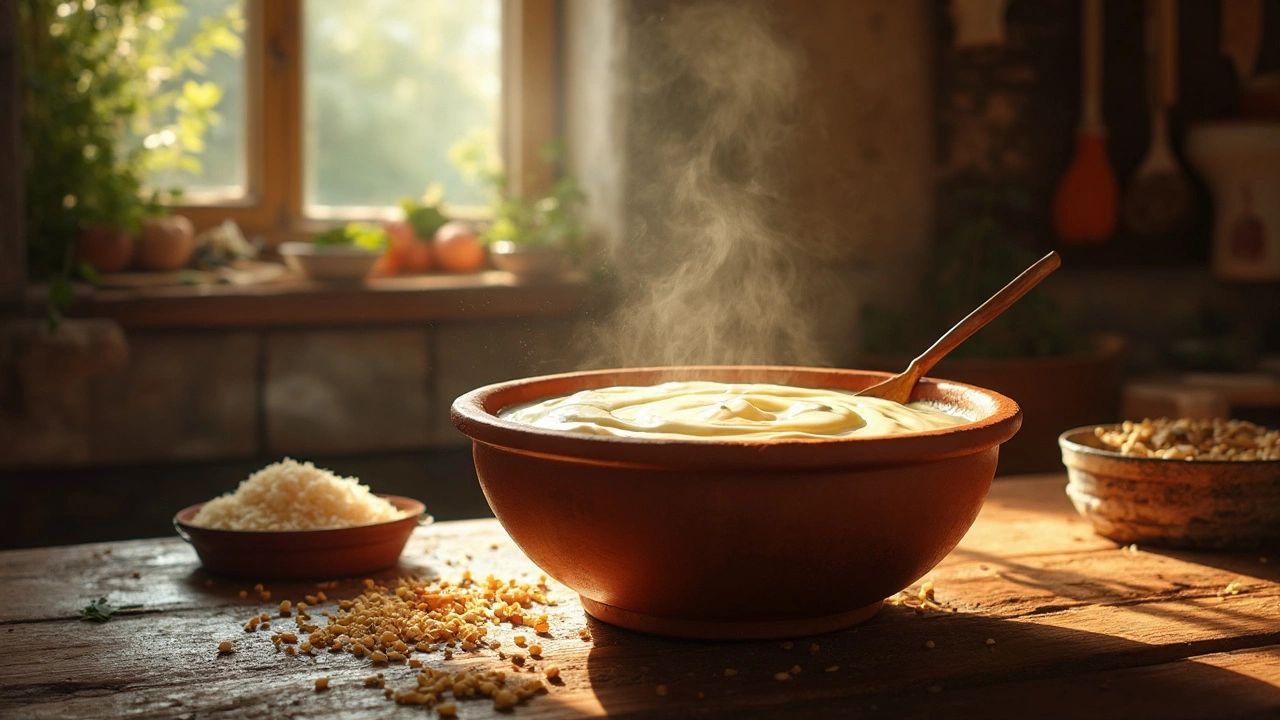Batter Fermentation: How to Master Fluffy Dosa, Idli & More
When working with batter fermentation, the natural process where microbes break down starches in a mixed batter, creating air pockets and tangy flavor. Also known as fermenting batter, it is essential for South Indian staples like dosa and idli. Dosa batter, a rice‑and‑lentil mix that relies on fermentation for fluffiness gets its signature texture from this microbial activity. Adding curd, the acidic dairy that jump‑starts the microbes supplies the right pH for lactobacillus and yeast to thrive, while a pinch of baking soda, a chemical leavener used to boost rise when fermentation time is short can give a quick lift if you’re in a hurry. Together, these elements make the batter rise, develop flavor, and produce the airy pockets that let dosas puff and idlis stay soft.
Why batter fermentation matters and how to control it
First, understand that batter fermentation isn’t magic; it follows a simple rule: microbes need food, moisture, and the right temperature. At room temperature (around 25‑30°C), lactobacillus and wild yeasts consume the sugars from rice and urad dal, producing carbon dioxide and lactic acid. This dual action creates the airy structure (air pockets) and a pleasant sour note. If the temperature drops below 20°C, the microbes slow down, extending the fermentation time and sometimes leaving the batter flat. Conversely, heat above 35°C can over‑acidify the mix, making it too sour and causing a gritty texture. Adjust the environment by placing the batter in a warm corner of the kitchen, inside an oven with the light on, or using a fermentation jar with a lid that lets a little air in.
Second, the choice of starter matters. Most home cooks use a spoonful of curd because its natural lactic acid bacteria give the batter an instant boost. You can also use a bit of previously fermented batter as a starter, which adds a deeper flavor profile. When you add baking soda, you’re essentially giving the batter a chemical shortcut: the soda reacts with the acids produced by fermentation, releasing extra carbon dioxide that helps the batter rise faster. This trick is handy for weekend cooks who don’t have 8‑12 hours to wait. Remember, though, that too much soda can give a metallic taste, so stick to about ½ teaspoon per cup of batter.
Third, water quality influences the process. Hard water can inhibit microbial activity, while soft water encourages it. If you notice sluggish fermentation, try using filtered or boiled‑then‑cooled water. Finally, don’t forget about the grain‑to‑lentil ratio. A classic dosa batter uses roughly 3 parts rice to 1 part urad dal; this balance provides enough starch for the microbes and enough protein for a tender crumb. Some variations swap rice for millet or add a handful of poha (flattened rice) to speed up fermentation because poha pre‑softens and releases sugars quickly.
Putting all this together, you can design your own fermentation plan. For a traditional overnight ferment, mix rice and dal, add enough water to achieve a smooth pourable consistency, stir in a tablespoon of curd, cover loosely, and let it rest 8‑12 hours. If you’re short on time, blend the same mix, add a pinch of baking soda, and let it sit in a warm spot for 2‑3 hours; the soda will react with the curd’s acidity, giving you a quick rise and the familiar sour hint. Either way, the end goal is the same: a batter that bubbles, smells pleasantly tangy, and yields dosas that puff up with golden edges and idlis that stay light.
Below you’ll find a collection of articles that dive deeper into each of these aspects—why curd is the secret starter, how baking soda can rescue a slow ferment, quick tricks for instant dosa batter, and even the science behind the tangy flavor. Whatever your skill level, these reads will give you actionable tips to perfect your batter fermentation every time.

Fast and Flavorful: Dosa Batter Fermentation Tricks Without Yeast
Making dosa batter without yeast is a traditional art that assures both quick fermentation and rich flavor. This article breaks down yeast-free methods using readily available ingredients like fenugreek seeds and poha. Discover how warm climates and simple room-temperature tricks can transform your batter. Read on to learn how to speed up the fermentation process and enjoy crispy dosas.